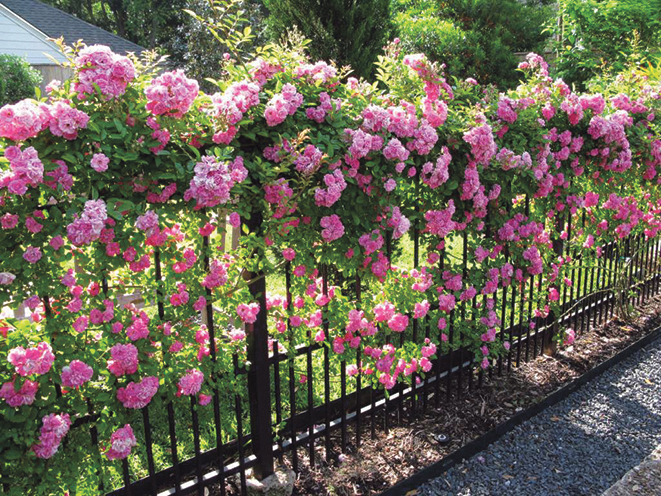Everyone loves a rose says Deborah Ballard of Future Forests and the trick for growing them at their best is to pick the right place for the right rose for you.
Rambler Roses have long, flexible stems, and tend to flower in one awe-inspiring flush at midsummer, although some, like crimson Excelsa, repeat sporadically. They bear masses of pretty, often double flowers; many, like salmon-pink Albertine, are highly scented. These are the roses to grow up a sturdy tree or over a large pergola. Most are large, but smaller ones can be trained along a wall. With their naturalistic habit, these roses are lovely in large or wilder gardens.
Climbers are smaller, with a much stiffer habit; they are more likely to repeat than ramblers and come in every flower colour, shape, scent and size. These are the roses to train on a wall as a fan or along wires to encourage flowering, or over an arch or pergola. Some, like richly scented, salmon-pink Compassion are so stiff that they are better grown up pillars or pergola-supports.
Modern shrub roses – hybrid teas and floribundas/cluster-flowered roses – come in a huge range of colours, flower-shapes and sizes, and repeat. These are the roses for a border, especially good when under-planted with sun-loving perennials and sub-shrubs like hardy geraniums or dwarf lavenders. Many modern shrubs have a climbing form, so be sure to choose the right one.
Some of the loveliest roses of all are the old garden roses, the albas, centifolias, damasks, moss roses and Bourbons, with their beautiful, highly scented rosette flowers; these shrub roses are mostly once-flowering. The English rose breeder David Austin decided to breed roses that had the scent and beauty of these old roses but were repeat-flowering and super-healthy, producing some stunning shrub, climbers, hedging and pillar roses, many with the RHS Award of Garden Merit. Some David Austin shrub roses, like the gorgeously scented, deep pink Gertrude Jekyll, can be used as a pillar rose or fan-trained as a climber on an 8’ wall.
Ground cover roses are low, weed-suppressing roses, usually repeat-flowering, and especially suitable for steep slopes and banks. Rugosa roses are the ones for a seaside garden, or for an impenetrable hedge; they repeat and have huge, round hips in autumn. Species roses, like lovely Rosa glauca, are particularly suitable for large and wilder gardens.
Plant your bare-root rose before bud-burst in mild, dry weather, water it in, and water well in dry weather in its first year.
Future Forests, Kealkill, Bantry, Co Cork
www.futureforests.ie.




